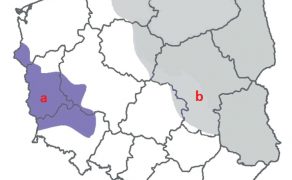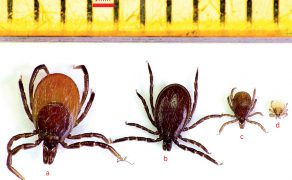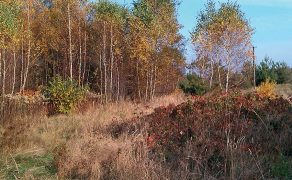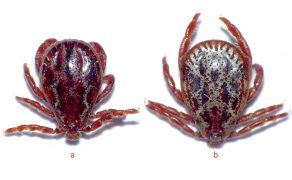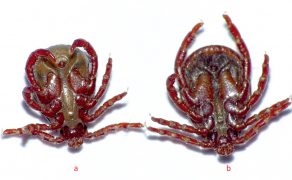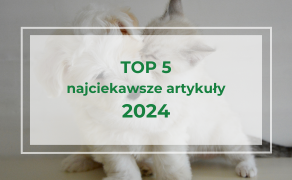Wektorowa rola kleszczy atakujących psy w Polsce
Piśmiennictwo
- Bajer A. et al.: Babesia canis and tick-borne encephalitis virus (TBEV) co-infection in a sled dog. “Annals of Agricultural and Environmental Medicine”, 2013, 20, 3.
- Bonnet S. et al.: Prevalence of tick-borne pathogens in adult Dermacentor spp. ticks from nine collection sites in France. “Vector-Borne and Zoonotic Diseases”, 2013, 13, 4, 226-236.
- Burtis J.C. et al.: The impact of temperature and precipitation on blacklegged tick activity and Lyme disease incidence in endemic and emerging regions. “Parasites & Vectors”, 2016, 9, 1, 606.
- Camacho A.T. et al.: Ixodes hexagonus is the main candidate as vector of Theileria annae in northwest Spain. “Veterinary Parasitology”, 2003, 112, 1, 157-163.
- Cook M.J.: Lyme borreliosis: a review of data on transmission time after tick attachment. “International Journal of General Mmedicine”, 2015, 8, 1.
- Földvári G., Rigó K., Lakos A.: Transmission of Rickettsia slovaca and Rickettsia raoultii by male Dermacentor marginatus and Dermacentor reticulatus ticks to humans. “Diagnostic microbiology and infectious disease”, 2013, 76, 3, 387-389.
- Hancock P.A., Brackley R., Palmer S.C.F.: Modelling the effect of temperature variation on the seasonal dynamics of Ixodes ricinus tick populations. “International journal for parasitology”, 2011, 41, 5, 513-522.
- Karbowiak G., Kiewra D.: New locations of Dermacentor reticulatus ticks in Western Poland: the first evidence of the merge in D. reticulatus occurrence areas. “Wiad Parazytol”, 2010, 56, 333-336.
- Karbowiak G.: Kleszcz łakowy Dermacentor reticulatus – występowanie, biologia i rola jako wektora chorób odkleszczowych. Rozprawa habilitacyjna. Wyd. Agencja Reklamowo-Wydawnicza A. Grzegorczyk, Warszawa 2009.
- Kiewra D., Czułowska A., Lonc E.: Winter activity of Dermacentor reticulatus (Fabricius, 1794) in the newly emerging population of Lower Silesia, south-west Poland. “Ticks and Tick-borne Diseases”, 2016, 7, 6, 1124-1127.
- Mierzejewska E.J. et al.: Dominance of Dermacentor reticulatus over Ixodes ricinus (Ixodidae) on livestock, companion animals and wild ruminants in eastern and central Poland. “Experimental and Applied Acarology”, 2015, 66, 1, 83-101.
- Mierzejewska E.J. et al.: Mapping of Dermacentor reticulatus expansion in Poland in 2012–2014. “Ticks and tick-borne diseases”, 2016, 7, 1, 94-106.
- Mierzejewska E.J. et al.: Pathogens vectored by the tick, Dermacentor reticulatus, in endemic regions and zones of expansion in Poland. “Parasites & vectors”, 2015, 8, 1, 490.
- Nowak-Chmura M., Siuda K.: Ticks of Poland. Review of contemporary issues and latest research. “Ann Parasitol”, 2012, 58, 125-155.
- Rudolf I., Hubálek Z.: Effect of the salivary gland and midgut extracts from Ixodes ricinus and Dermacentor reticulatus (Acari: Ixodidae) on the growth of Borrelia garinii in vitro. “Folia parasitologica”, 2003, 50, 2, 159-160.
- Solano-Gallego L., Gad B.. Babesiosis in dogs and cats – expanding parasitological and clinical spectra. “Veterinary parasitology”, 2011, 181, 1,: 48-60.
- Sonenshine D.E., Roe M.R.: Biology of Ticks: Vol. 2. OUP USA, 2014.
- Sukanya N., Fikrig E.: Tick microbiome: the force within. “Trends in Parasitology”, 2015, 31, 7, 315-323.
- Weissenböck H., Suchy A., Holzmann H.: Tick-borne encephalitis in dogs: neuropathological findings and distribution of antigen. “Acta neuropathologica”, 1998, 95, 4, 361-366.
- Welc-Falęciak R. et al.: Babesia canis and other tick-borne infections in dogs in Central Poland. “Veterinary Parasitology”, 2009, 166, 3, 191-198.
- Welc-Falęciak R. et al.: Effects of host diversity and the community composition of hard ticks (Ixodidae) on Babesia microti infection. “International Journal of Medical Microbiology”, 2008, 298, 235-242.
- Welc-Falęciak R. et al.: Rickettsiaceae and Anaplasmataceae infections in Ixodes ricinus ticks from urban and natural forested areas of Poland. “Parasites & Vectors”, 2014, 7, 1, 121.
- Wielinga P.R. et al.: Longitudinal analysis of tick densities and Borrelia, Anaplasma, and Ehrlichia infections of Ixodes ricinus ticks in different habitat areas in The Netherlands. “Applied and Environmental Microbiology”, 2006, 72, 12, 7594-7601.
- Wójcik-Fatla A. et al.: Prevalence of tick-borne encephalitis virus in Ixodes ricinus and Dermacentor reticulatus ticks collected from the Lublin region (eastern Poland). “Ticks and Tick-borne Diseases”, 2011, 2, 1, 16-19.
- Zygner W., Gojska-Zygner O.: Babeszjoza psów jako posocznica pierwotniacza. „Życie Weterynaryjne”, 2012, 87, 7.
Galeria
Mogą zainteresować Cię również
Znajdź swoją kategorię
2855 praktycznych artykułów - 324 ekspertów - 23 kategorii tematycznych
Weterynaria w Terenie

Mykotoksyny – ukryty wróg w hodowli bydła mlecznego
Środki wiążące mykotoksyny i wspomagające terapie Współczesne strategie minimalizacji ryzyka związanego z mykotoksynami opierają się na zaawansowanym, wielokierunkowym podejściu, łączącym środki wiążące i rozkładające toksyny w połączeniu z prebiotykami i probiotykami. Glinokrzemiany, będące naturalnymi lub syntetycznymi minerałami glinokrzemowymi, wykazują wysoką skuteczność w adsorpcji mykotoksyn. Ich działanie polega na tworzeniu stabilnych kompleksów z toksynami, uniemożliwia ich […]
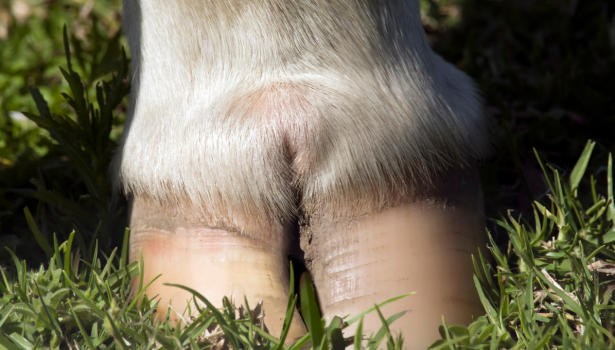
Kulawizna u bydła mlecznego (choroba Mortellaro). Skuteczne zwalczanie zapalenia skóry palca dzięki naturalnemu rozwiązaniu
Biodevas Laboratoires opracowała PIETIX – rozwiązanie w 100% naturalne, mające na celu zwalczenie zapalenia skóry palca u bydła mlecznego.
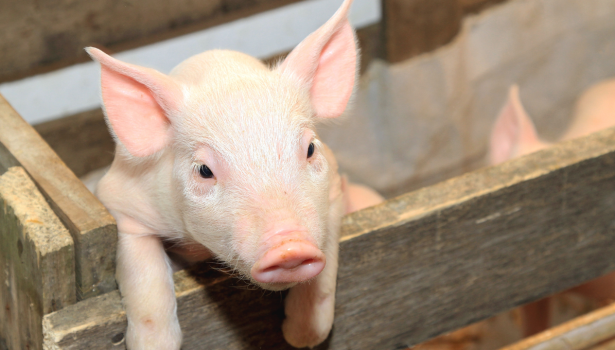
Czynniki wpływające na kolonizację mikrobiomu i dojrzałość układu pokarmowego prosiąt oraz jego prawidłowe funkcjonowanie
Ze względu na stymulację układu odpornościowego aminokwasy są najczęściej atakowanym składnikiem odżywczym, a prosięta mogą mieć zwiększone zapotrzebowanie na aminokwasy podczas odsadzenia (49). Dodatek niektórych aminokwasów do paszy może zwiększyć poziom czynników przeciwwydzielniczych w osoczu i zmniejszyć częstość występowania biegunki u prosiąt odsadzonych (30). Badania wykazały, że gdy układ odpornościowy jest atakowany, na przykład podczas […]
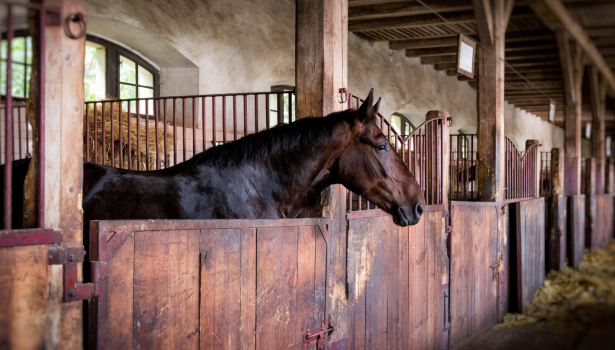
Opieka stomatologiczna nad starszymi końmi
Wklęsłe powierzchnie trące U koni w wieku powyżej 20 lat powierzchnie trące zębów policzkowych zaczynają przybierać wklęsły kształt i tracą wypukłe listewki poprzeczne. Najwcześniej zmiany te pojawiają się w pierwszych górnych trzonowcach (109 i 209), a z czasem obejmują kolejne zęby. Zmniejsza to w znaczący sposób powierzchnię rozcierania pokarmu. Jeśli sytuacja dotyczy wielu zębów, a […]

Praktyka w terenie – jak zabezpieczyć się na wypadek stanów zagrożenia życia lub zdrowia zwierzęcia
Piśmiennictwo mec. Anna SłowińskaVox Poland Pomoc PrawnaSzczecin Facebook0Tweet0LinkedIn0

Wiek ma ogromne znaczenie podczas stawiania diagnozy
Lek. wet. Justyna Domagała tytuł inżyniera zootechniki uzyskała w 2016 r., a tytuł lekarza weterynarii – w 2019 r. na Uniwersytecie Przyrodniczym we Wrocławiu. Po studiach swoją wiedzę poszerzała podczas stażu w Szpitalu dla Koni Equivet, w którym później uzyskała zatrudnienie. W latach 2021-2024 swoją pracę skupiała na internistycznym leczeniu koni oraz pogłębianiu wiedzy na […]

Echa 32. Kongresu Bujatrycznego w Cancun
Profilaktyka Kongres był również okazją do zaprezentowania kilku przełomowych produktów immunologicznych, które mają szansę wprowadzić na nowe tory prewencję znanych od lat jednostek chorobowych, sprawiających wiele kłopotów z punktu widzenia odchowu cieląt czy rozrodu. Mowa tu konkretnie o trzech nowych szczepionkach mających zastosowanie w profilaktyce Mycoplasma bovis, Cryptosporidium parvum czy wirusowej biegunki bydła (BVD). Nie […]


